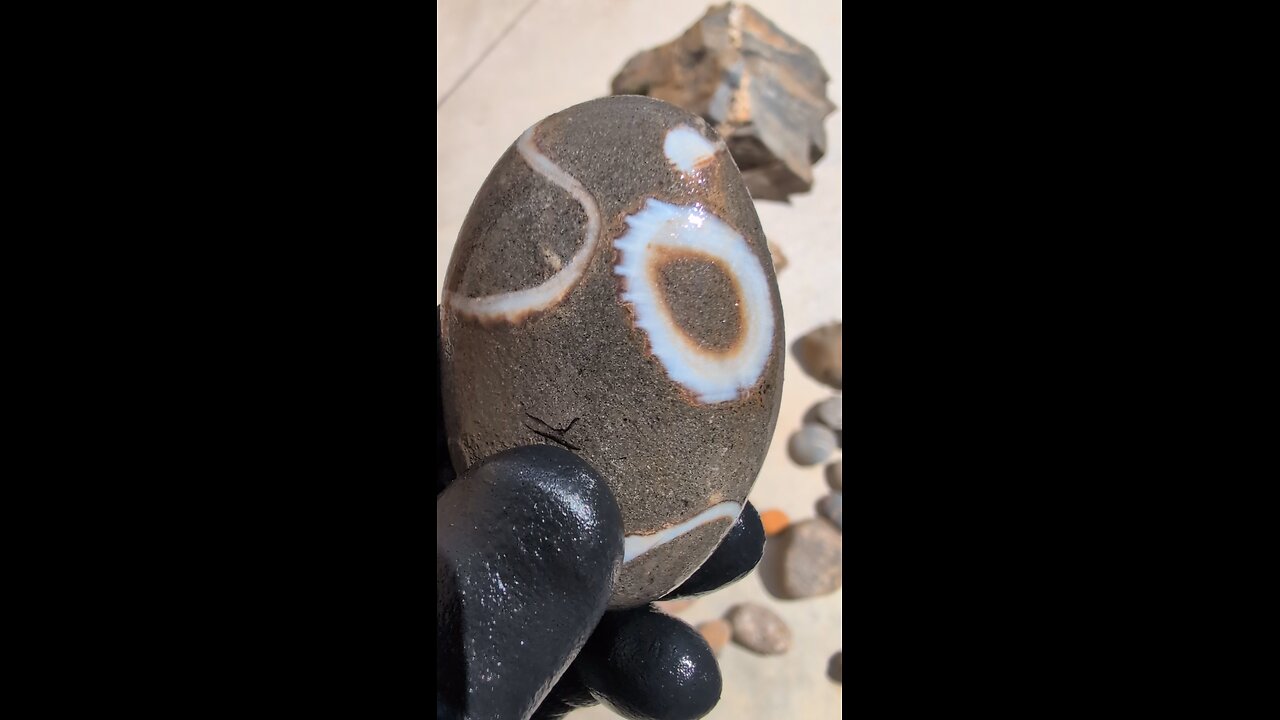Premium Only Content

Trilobite molds!
The fossil in the image appears to be another trilobite mold. Trilobites are extinct marine arthropods that lived from the Cambrian to the Permian periods (about 521 to 252 million years ago). The white, curved lines and circular patterns on the rock surface are characteristic of a trilobite's cephalon (head) and thoracic segments, preserved as a mold or cast. The concentric, eye-like structure on the right side is likely part of the cephalon, possibly showing the outline of the glabella (the central raised area of the head) or even the eye region, which is prominent in some trilobite species.
The overall shape and the way the segments are outlined suggest this could be a mold of a trilobite like Phacops or Dalmanites, both of which have well-defined cephalic features and are common in Paleozoic rocks. The white material filling the impressions is likely a mineral like calcite that precipitated into the mold after the trilobite's exoskeleton dissolved. This type of preservation is common in sedimentary rocks where the original organic material has been replaced or eroded away, leaving an impression.
Given that you’ve also shown tabulate and rugose corals from the Paleozoic era, as well as another trilobite, this specimen likely comes from a similar geological context, possibly the Devonian period (419 to 358 million years ago), where trilobites and corals were often found together in marine environments.
-
 2:34:46
2:34:46
TheSaltyCracker
8 hours agoWe Got Him Fired ReeEEStream 9-17-25
157K373 -
 43:44
43:44
Man in America
10 hours agoAmericans Are About to Lose Everything—And They Don’t Even Know It
61.2K30 -
 1:41:11
1:41:11
Adam Does Movies
2 days ago $3.58 earnedTalking Movies + Ask Me Anything - LIVE
46K2 -
 3:40:08
3:40:08
I_Came_With_Fire_Podcast
16 hours agoNASA Blocks China, TPUSA BOOSTED, Chinese Spamoflauge, & Factional Division
44.8K6 -
 33:40
33:40
Jamie Kennedy
8 hours agoEp 222 Processing the Loss of Charlie Kirk | HTBITY with Jamie Kennedy
64.5K28 -
 1:32:05
1:32:05
Badlands Media
23 hours agoAltered State S3 Ep. 46: Tactical Nukes, Thermite, and the 9/11 Puzzle
77K11 -
 9:18
9:18
ARFCOM News
13 hours ago $2.00 earnedNSSF "Celebrates" ATF Partnership | Glocks BANNED | Redundant Spooky Boi Ban
40.4K10 -
 13:09:13
13:09:13
LFA TV
21 hours agoLFA TV ALL DAY STREAM - WEDNESDAY 9/17/25
310K61 -
 1:00:00
1:00:00
BEK TV
1 day agoAPRIL LUND: FAITH, FOCUS, AND THE ROAD TO THE 2028 OLYMPIC MARATHON
26.2K1 -
 37:15
37:15
Stephen Gardner
8 hours ago🔥Trump ERUPTS After Obama’s Charlie Kirk Comments!
39.3K88